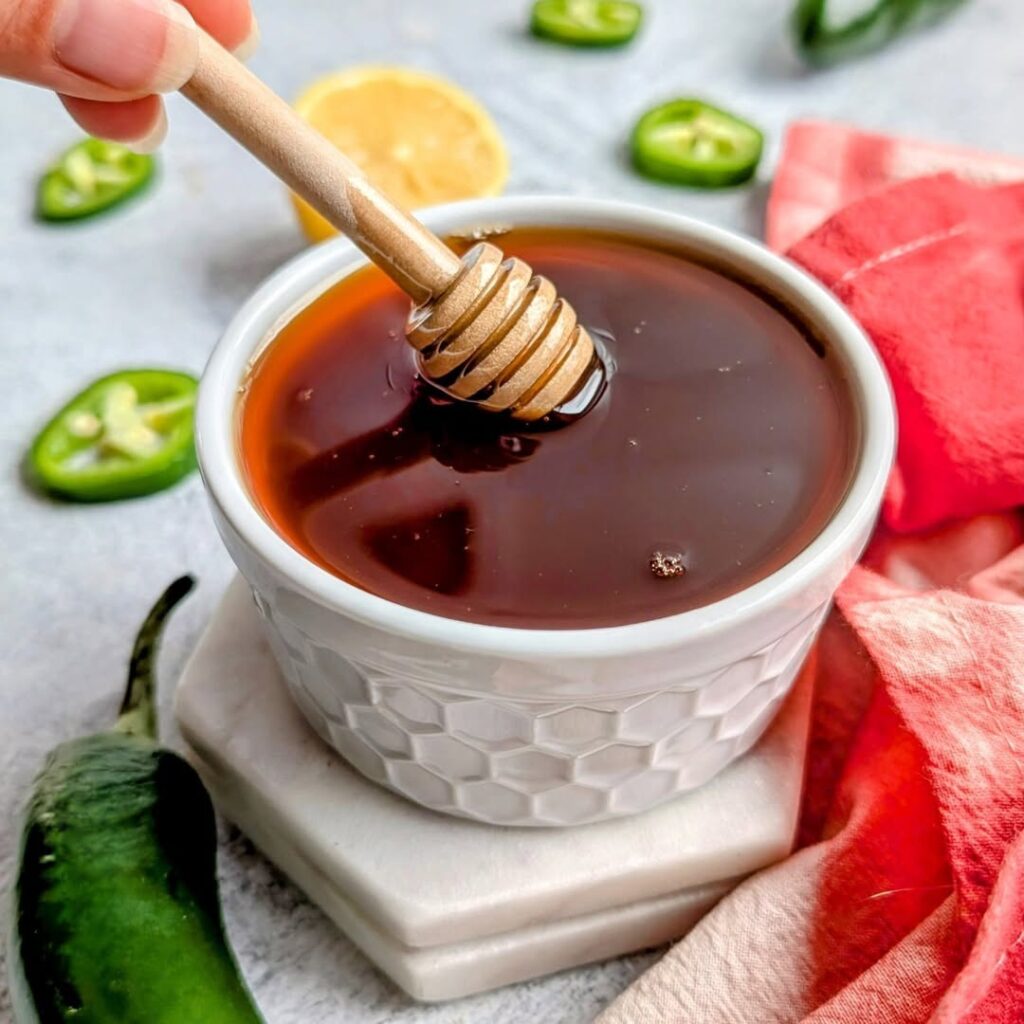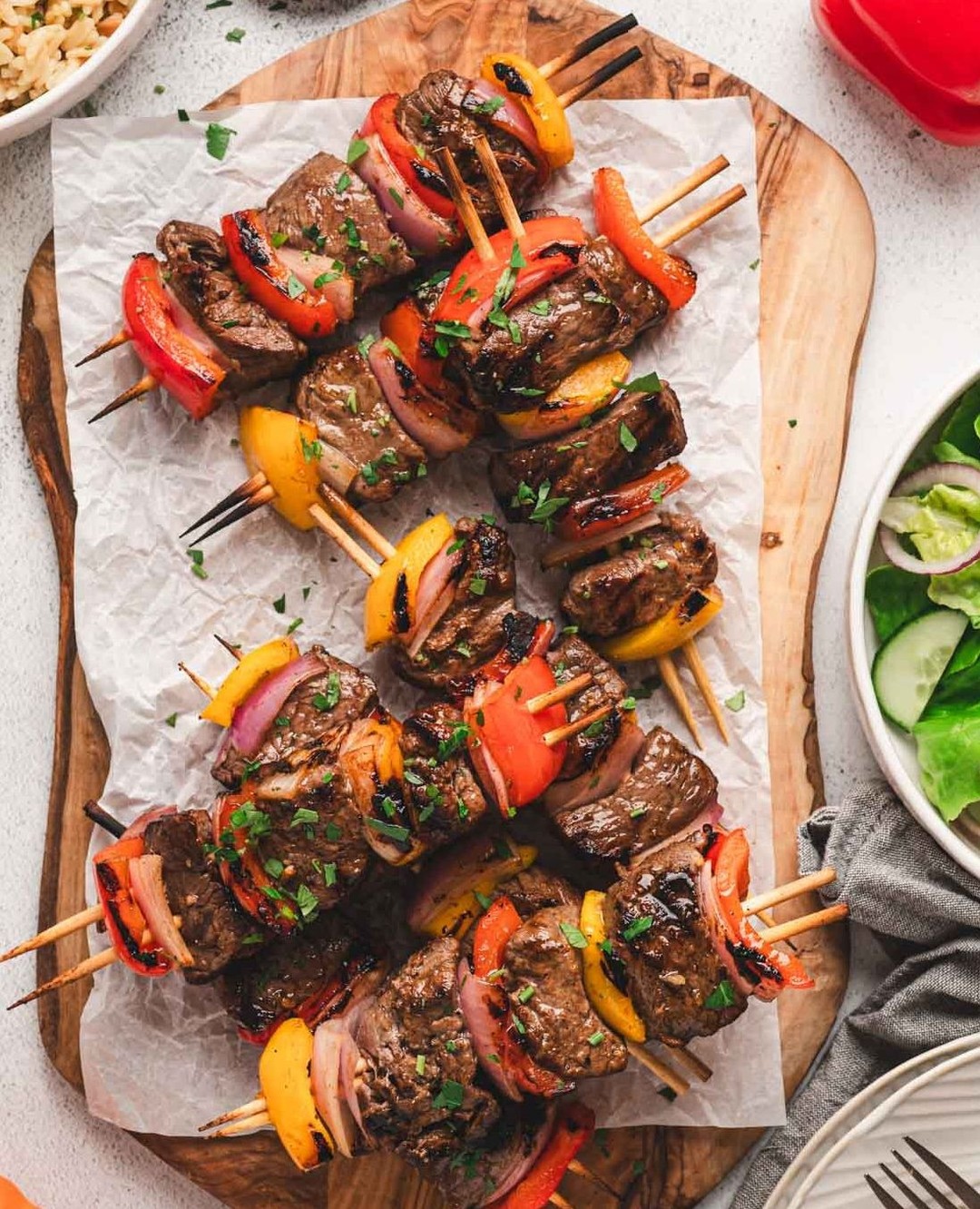If you’ve ever stood over a grill, skewer in hand, and thought, “Kabobs are simple,” let me gently and lovingly correct you. Middle Eastern kabobs are not simple – they’re a whole universe.
They’re culinary history on a stick. They’re spice diplomacy. They’re the reason your neighbor suddenly appears in your yard the moment the grill lid opens.
As a pitmaster who spends way too much time obsessing over fire, smoke, and perfectly charred meat, I can tell you this: Middle Eastern kabobs aren’t just food. They’re tradition.
They’re craft. They’re storytelling seasoned with cumin and grilled over charcoal.
This article is the grand tour – flavors, spices, techniques, regions, traditions, everything that makes kabobs an enduring Middle Eastern masterpiece. Grab a seat. Grab a skewer. Let’s cook.

What Makes Middle Eastern Kabobs Special?
Kabobs in the Middle East are not just “meat on a stick.” If you say that to someone from the region, they’ll stare at you the same way a brisket purist stares at someone boiling a brisket.
Here’s what truly sets them apart:
1. Layers of Flavor
Middle Eastern kabobs are built on aromatics, spices, herbs, marinades, char, smoke, and texture. Nothing is random. Everything has a purpose.
A simple mix of onions, garlic, and parsley can transform ground meat into something that tastes like it took a royal kitchen to produce.
2. Respect for the Fire
You haven’t lived until you’ve seen a Middle Eastern grill master work charcoal. It’s hypnotic.
Kabobs thrive over open flame, where smoke wraps itself around the meat like a seasoning all on its own.
3. Community and Ritual
A kabob cookout is not a one-person event. It’s uncles arguing over lemon-to-garlic ratios. It’s cousins rushing to skewer duty. It’s someone’s aunt shouting, “The kabobs are burning!” when they’re absolutely not. Middle Eastern kabobs bring people together – every time.
A Brief History of Kabobs
Let’s go back – way back – to when kabobs (or kebabs, depending on the region) first appeared.
Nomads: The Original Grill Masters
Long before restaurants and food blogs, nomadic tribes cooked meat over open fires. Swords doubled as skewers. Yes – actual swords. Imagine cooking dinner and defending your camp with the same tool. Efficiency.
Empires and Spice Routes
As Persian, Ottoman, and Arab empires expanded, spices traveled, cooking styles blended, and kabobs evolved into dozens of variations.
Trade routes brought saffron, sumac, pepper, and citrus. Empires brought technique. People brought creativity. Kabobs became cultural signatures.
Modern Kabobs: The Global Migration
Today, kabobs show up everywhere – from street carts to high-end dining.
And while every region claims theirs is the best (and they’re all right), they share one thing: flavor built on tradition.
Regional Kabob Styles Across the Middle East
Each country has its own kabob personality. Here’s the world tour.
Persian Kabobs (Iran)
Persian cuisine is elegance disguised as simplicity. The flavors are subtle, but layered with precision.
Koobideh
A legend. A classic. Ground beef or lamb mixed with grated onion, salt, pepper, and sometimes saffron.
It’s soft, juicy, and takes skill – because koobideh has one mission: slide off the skewer if you don’t treat it right.
Kabob Barg
Thinly sliced beef or veal, marinated in saffron, lemon, and butter. Barg is refined, aromatic, and melts in your mouth.
Jujeh Kabob
Chicken marinated in yogurt, saffron, lemon, and onion. If sunshine were a marinade, this would be it.
Persian Flair
Persian kabobs lean lighter, floral, and fragrant. Saffron isn’t just a spice – they treat it like gold.
Turkish Kabobs (Turkey)
Turkey is the land of big flavors and bigger grills.
Adana Kebab
Ground lamb mixed with red pepper paste and spices, hand-spread onto wide skewers.
Spicy, bold, smoky – basically the extrovert of kabobs.
Urfa Kebab
Adana’s mellower, sweeter cousin. Same style, different heat level.
Shish Kebab
The global icon: simple cubes of lamb or beef marinated in olive oil, garlic, and herbs.
Iskender Kebab
Thin slices of lamb over pita soaked in tomato butter. Not grilled, but too legendary to skip.
Turkish Trick
The secret is biber salçası – pepper paste that adds heat and richness without overwhelming the meat.
Levantine Kabobs (Lebanon, Syria, Jordan)
This region brings brightness, citrus, garlic, and balance.
Kafta (Kofta)
Ground meat with parsley, onion, and warm spices. Simple ingredients, huge flavor.
Shish Taouk
Chicken marinated with garlic, lemon, yogurt, and paprika. Served with toum (garlic whip) that can stun you with one sniff.
Lahm Meshwi
Lamb cubes marinated in olive oil, lemon, and seven-spice blend.
Levant Style
Think fresh, zesty, herb-forward kabobs. Perfect with mezze.
Gulf & Arabian Kabobs
The Gulf region leans into spices like cardamom, saffron, cinnamon, and charcoal grilling.
Kebab Halabi
Syrian-origin, widely enjoyed in the Gulf – ground lamb with Aleppo pepper and parsley.
Arabian Signature
Kabobs here taste warm, fragrant, and slightly sweet thanks to signature spice blends.
Iraqi & Kurdish Kabobs
Iraqi kabobs are all about onion-forward seasoning and soft meat textures.
Iraqi Kebab
Ground lamb + grated onion + salt + char.
Kurdish Kabob
Often larger, bolder, seasoned with paprika and herbs.

The Essential Spices of Middle Eastern Kabobs
Let’s talk spice – the backbone of all great kabobs.
Warm Spices
These create depth without making the meat taste “spicy”:
- Cumin
- Coriander
- Allspice
- Cinnamon
- Cardamom
Aromatics
The unsung heroes:
- Garlic
- Onion
- Fresh parsley, mint, cilantro
Signature Spices That Define the Region
- Sumac – lemony brightness
- Aleppo Pepper – smoky, sweet heat
- Baharat – warm spice blend
- Za’atar – herbal, citrusy, savory
- Saffron – the king of aroma
Middle Eastern spice philosophy:
Bold but balanced. Fragrant but never harsh. Complex but never confusing.
Marinades & Techniques: The Real Secret to Great Kabobs
Any pitmaster will tell you: the marinade makes the magic.
Yogurt-Based Marinades
Used heavily in Persian and Levantine kabobs.
Yogurt tenderizes meat without making it mushy and adds tang.
Use it with:
- Chicken
- Lamb
- Beef (thin cuts)
Oil + Acid Marinades
The classic:
Olive oil + lemon juice + garlic + spices. Great for shish kebabs and seafood kabobs.
Dry Rubs & Spice Pastes
Some kabobs – like Adana – skip liquid entirely.
They rely on:
- pepper pastes
- spice blends
- kneading to bind
Skewering Tips from a Pitmaster
- Use flat metal skewers to prevent spinning.
- Pack ground meat tightly, but not too dense.
- For cubes of meat, keep them uniform for even cooking.
- Leave space between veggies and meat – different cooking times.
Cooking Methods: Fire, Smoke & Tradition
There’s grilling, and then there’s kabob grilling.
Charcoal Grilling
The gold standard.
Charcoal gives kabobs:
- Smoke
- Depth
- Caramelized edges
Gas grilling? Acceptable. Charcoal? Magical.
Oven Broiling
A good indoor backup. Gets the high heat needed for browning.
Cast-Iron Grilling
Perfect for apartments, rainy days, or the “I refuse to stop making kabobs” crowd.
Kabobs Are a Social Ritual
You never grill kabobs alone. Someone shows up with flatbread, someone brings pickles, someone is “supervising” with a drink.
Kabobs are community.

The Art of Serving Kabobs: Sides, Sauces & Accompaniments
A kabob is only as good as what surrounds it.
Essential Sides
- Rice pilafs (especially Persian saffron rice)
- Fresh flatbreads
- Grilled vegetables
Sauces That Matter
- Toum – fluffy garlic sauce
- Tahini – nutty sesame goodness
- Yogurt dips with mint or cucumber
- Tomato-based sauces for Turkish varieties
Pickles & Salads
This is where Middle Eastern cuisine shines:
- Tabbouleh
- Fattoush
- Pickled turnips
- Cucumber salads
They bring freshness and contrast to rich, smoky kabobs.
1. What makes Middle Eastern kabobs different from other types of kabobs?
Middle Eastern kabobs rely on bold spices, fresh aromatics, and traditional grilling techniques passed down for generations.
They’re typically cooked over charcoal, use distinctive spice blends like sumac, Aleppo pepper, baharat, and often include fresh herbs that create a bright, vibrant flavor profile.
2. What’s the best meat to use for authentic Middle Eastern kabobs?
For ground kabobs like koobideh, kafta, or Adana, use ground lamb or beef with around 20% fat – this keeps the meat juicy and prevents it from falling apart.
For cubed kabobs like shish kebab or lamb meshwi, choose tender cuts such as lamb leg, beef sirloin, or chicken thighs.
3. Do I need special equipment to make kabobs at home?
Not at all. While traditional Middle Eastern kabobs are grilled on open charcoal grills, you can use gas grills, oven broilers, or cast-iron grill pans at home.
If using ground meat kabobs, flat metal skewers are recommended to keep the meat from sliding or spinning.
4. How long should I marinate kabobs for the best flavor?
It depends on the protein:
- Chicken kabobs: 4–12 hours
- Beef kabobs: 2–8 hours
- Seafood kabobs: 30–60 minutes
Longer isn’t always better – over-marinating can break down the texture, especially when using acidic marinades.
5. What sauces and sides traditionally pair with Middle Eastern kabobs?
Kabobs are often served with toum (garlic sauce), tahini, yogurt dips, grilled vegetables, pickles, tabbouleh, fattoush, and saffron rice.
Fresh bread like pita or lavash helps balance the smoky flavors and completes the meal.
Modern Takes on Middle Eastern Kabobs
The new era of kabobs is creative – but still rooted in tradition.
Fusion Kabobs
- Korean chili + Middle Eastern spices
- Pomegranate molasses glazes
- Harissa chicken skewers
Health-Conscious Kabobs
- Leaner meats
- Air-fried kabobs
- Low-salt marinades
- Extra vegetables
Vegetarian Kabobs
Surprisingly incredible:
- Halloumi cheese
- Mushroom koobideh
- Eggplant skewers
- Spiced veggie patties
Today’s cooks mix tradition with innovation – and kabobs adapt beautifully.
Tips for Making Perfect Kabobs at Home
A few pitmaster tricks to take your kabobs from good to “stop everything and taste this.”
1. Marinate Long Enough – but Not Too Long
- Chicken: 4–12 hours
- Beef: 2–8 hours
- Seafood: 30–60 minutes
2. Don’t Overwork the Meat
With ground kabobs, mix gently. Overworking = dense, rubbery texture.
3. Fat = Flavor
For ground kabobs, stick to 20% fat. Trust me.
4. Salt at the Right Time
Salt early for ground meat. Salt right before grilling for cubes of meat.
5. Test Before You Grill
Fry a tiny piece in a pan to check seasoning. Adjust accordingly.
6. High Heat, Short Time
Kabobs thrive on fast, hot cooking. Low and slow is for brisket – not kabobs.
Sample the Gritty Taste of Middle Eastern Kabobs and Kebabs
Middle Eastern kabobs aren’t just grilled meat – they’re heritage, culture, craftsmanship, and a celebration of fire and flavor. They carry generations of knowledge, migration, trade, and storytelling on every skewer.
From saffron-soaked Persian koobideh to peppery Turkish Adana to lemony Levantine shish taouk, each kabob shines with regional pride and culinary mastery.
When you make kabobs, you’re not just cooking – you’re joining a tradition older than most nations. And whether you use a backyard grill or a simple broiler, the magic is still there.
Fire. Spice. Smoke. Community.
That’s the magic of Middle Eastern kabobs.
Featured image credit: @yellowblissroad

